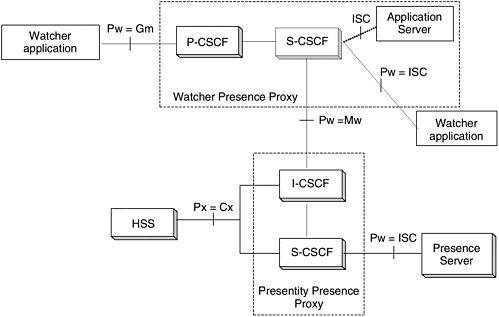15.6 Service Evolution
| Service provisioning in wireless networks is evolving differently for mobile operators, ISPs, and corporate networks. 15.6.1 Service Evolution in 3GPPService control has been an integral part of the 2G cellular networks and provides functionality similar to the Intelligent Networks (IN) in fixed networks. Service control is related to controlling the use of network resources as per the user communications, available application services, and subscription agreements. In GSM, the service control functions are implemented as a variation to IN called Customized Applications for Mobile Network Enhanced Logic (CAMEL). CAMEL provides network features and capabilities so that roaming subscribers can utilize the operator service even when roaming outside the home network. Service control in 3G networks has taken precedence due to higher costs in obtaining 3G licenses. Hence, mobile operators must provide more revenue-generating and value-added services (VAS) beyond traditional voice services like IP real-time multimedia services. Although service control in 3G networks is an evolution of CAMEL, one of the important aspects introduced is the concept of virtual home environment (VHE). VHE allows subscribers the flexibility and convenience to access the home operator services irrespective of where the subscriber may be roaming and even with different terminals. VHE allows subscribers to create a personal service environment (PSE) in the home network and provides access to same services, configuration settings, and perception as if subscribers are in the home network at all times. Within the VHE concepts, a toolkit was introduced so that the network functionalities can be utilized by means of an open standardized API support in the form of middleware from external application servers. The API shall provide an extensible and implementation-independent approach to support subscriber call control, supplementary services, and service capability discovery functions. In addition to OSA, the VHE can be implemented by use of other tools like CAMEL, MEXe, and USAT. UMTS Release 99 specifications included the VHE/OSA concept for CS services. However, the service control for IMS services has been evolving in the recent UMTS Releases 4 and 5. For 3GPP, service provisioning is evolving toward the support of most IP services through the IMS (i.e., through a SIP infrastructure). This includes not only voice over IP, but presence services, instant messaging, and streaming services. This is true of course only for services provided by the mobile operator, whereas users can still access services available over the Internet (e.g., multimedia streaming). Presence service architecture has been introduced in UMTS Release 6. Figure 15-10 shows the architecture that is under discussion. The presence information of the user maintained in the presence server is collected through HSS and S-CSCF together. Other interested parties, called watcher applications, can query the user presence information through standard interfaces. Figure 15-10. Presence service architecture in 3GPP Release 6. 15.6.2 Service Evolution in 3GPP2In 3GPP2, the all-IP NAM has introduced a high-level view of the type of services that should be supported by cdma2000. Recently, service provisioning in 3GPP2 has been evolving toward the concepts of the Internet Multimedia Subsystem defined in 3GPP. Several manufacturers and carriers are working toward the adoption of the same concepts and solutions defined in 3GPP, with the intention to provide a common set of services and service machinery for both 3GPP and 3GPP2 networks. For ISPs, service provisioning is evolving to consider a large variety of services, with focus on supporting multimedia applications. It is to be expected that the service model adopted by ISPs will be different from the one adopted by traditional mobile operators as 3GPP and 3GPP2. ISPs have traditionally been providing access to the global Internet and providing a somehow limited set of specific services, maintaining the focus on allowing subscribers access to services available over the Internet. Recent years have seen the expansion of corporate networks through VPNs and the support for remote access, wherein users can access with security tunnels the services and resources of the home corporate network. In a way, VPNs allow a mobile subscriber to be connected directly to the home corporate network independent of the actual point of attachment to the IP networks. VPNs can be supported through mobile wireless networks, and this allows corporate networks to provide to their users the same set of services independent of the location of the users. This model seems to be very beneficial for corporate users and for the corporation itself, while mobile operators benefits from the use of transport resources. |
EAN: 2147483647
Pages: 164
